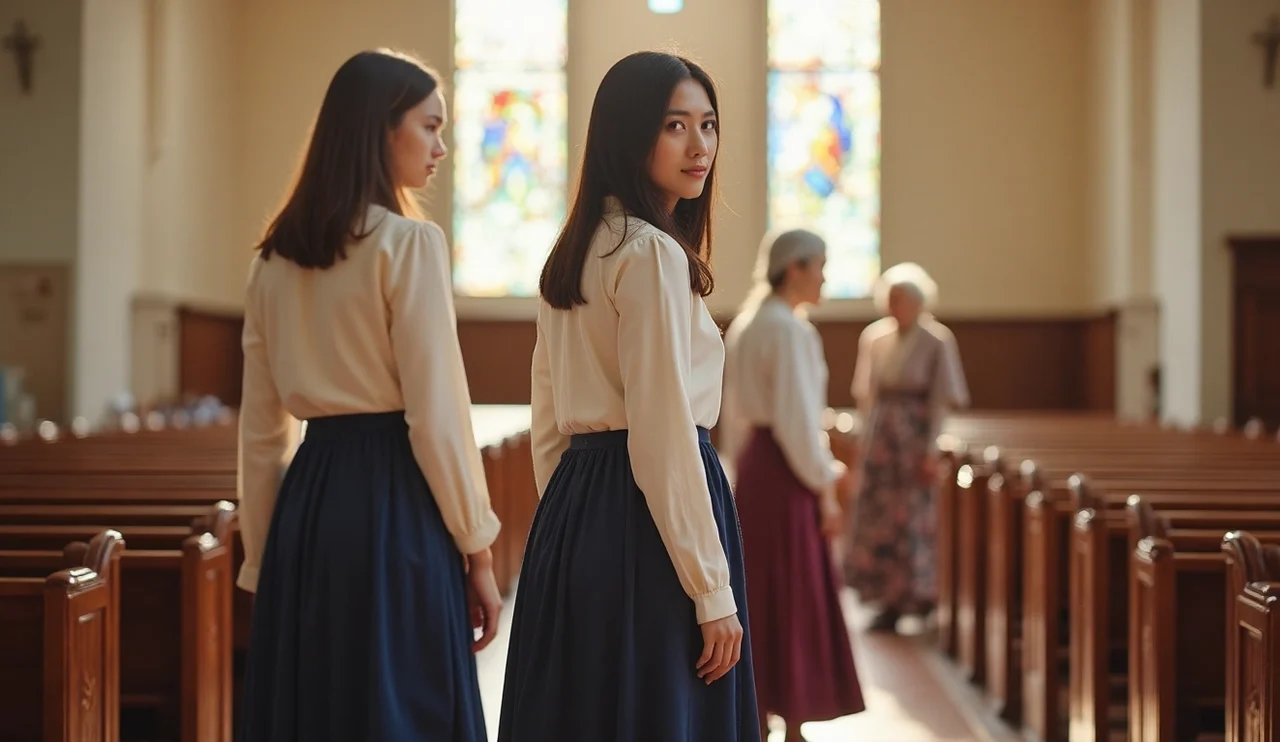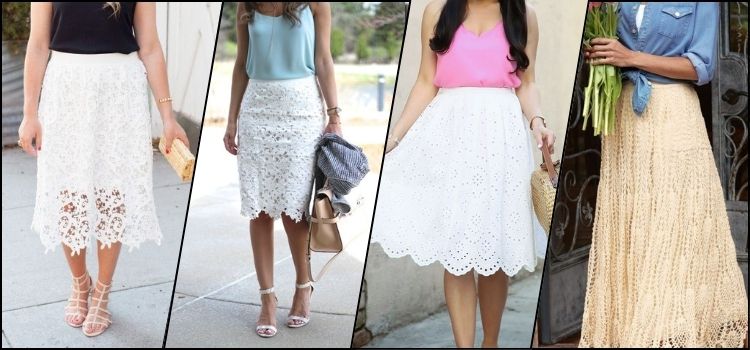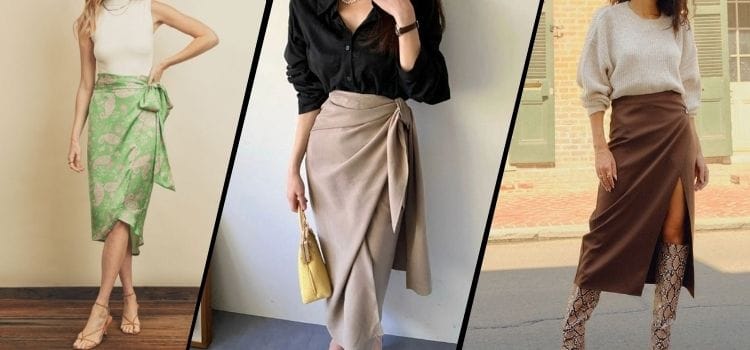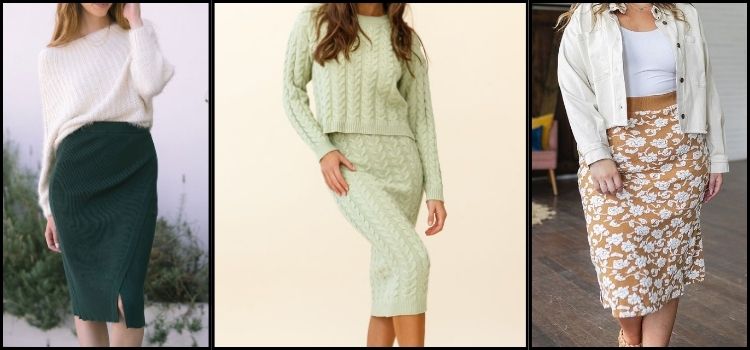Why Do Religious Women Wear Skirts? The Truth Behind Modest Dress Codes

As an Amazon Associate, I earn from qualifying purchases
In religions where women wear skirts, this distinctive clothing choice represents far more than a fashion preference—it embodies deep spiritual convictions and biblical interpretations. Pentecostal women often make the free choice to wear skirts as part of their commitment to holiness. This practice stems directly from their understanding of scripture and religious teachings about modesty and gender distinction.
As a fifth-generational Apostolic Pentecostal woman, I’ve observed firsthand how our clothing choices reflect our spiritual values. Pentecostal women dress in skirts because they adhere strictly to biblical passages that dictate they not wear the same type of clothing as men. Specifically, many follow Deuteronomy 22:5, which states: “The woman shall not wear that which pertaineth unto a man, neither shall a man put on a woman’s garment: for all that do so are abomination unto the LORD thy God”.
Indeed, the basic reason for this modesty of dress is to “subdue the lust of the flesh, the lust of the eye, and the pride of life”.
Throughout this article, I’ll explore the scriptural foundations, cultural traditions, and practical applications of modest dress codes. We’ll examine why certain religious communities emphasize skirts for women, how these practices are passed down through generations, and the challenges these traditions face in modern society.
Cultural Identity and Generational Influence
Religious dress codes surrounding women’s clothing often transcend mere rules—they represent powerful expressions of cultural identity and community belonging. The practice of wearing skirts among religious women connects deeply to both historical traditions and ongoing generational influence.
The role of tradition in religious dress
Religious clothing serves as a visual expression of faith, community, and identity while embodying profound ideas such as reverence, modesty, and devotion. The church functions as a cultural institution where fashion becomes an expression of social identity, particularly intensified with gender identity. Despite fashion constantly evolving, the distinction between men and women through clothing as gender symbols has remained remarkably consistent in many religious traditions.
For many religious communities, dress codes reflect core values. In African American churches, for instance, elaborate hats hold deep historical significance as symbols of freedom and resistance. These garments don’t merely cover the body—they tell stories of resilience, faith, and cultural heritage that span generations.
Mother-daughter transmission of modesty norms
Not all dress codes exist as explicit rules. Within religious communities, modesty standards often pass silently from mother to daughter across generations. This transmission typically occurs through observation and informal pressure rather than written mandates. As one religious commentator noted, “In a social and cultural context like the church, [dress codes] can be passed generation through generation without saying a word”.
When mothers approach conversations about modesty with daughters, they’re addressing far more than hemlines—they’re discussing identity formation. As expressed in one Christian publication, “The real question is not about how short or how low… it’s about identity”. These conversations shape not merely clothing choices but spiritual values.
Religion where females wear only skirts: examples
Several religious denominations maintain strict dress codes requiring women to wear only skirts or dresses. Conservative Anabaptist groups, including Amish and Old Order Mennonites, have plain dress requirements where all women wear skirts. Furthermore, Pentecostal and Apostolic women commonly wear long skirts, citing Deuteronomy 22:5 as biblical justification, believing pants are intended exclusively for men.
Orthodox Jewish women likewise emphasize modesty through long skirts and covered hair, particularly after marriage. While specific requirements vary across denominations, these practices create visible markers of religious identity. In Pentecostal communities, gender distinctions are particularly pronounced—sometimes extending beyond clothing to practices like separate seating in austere denominations.
Although these traditions might appear restrictive to outsiders, many adherents view their distinctive dress as a freely chosen expression of faith, modesty, and separateness from mainstream culture.
Scriptural Interpretations That Shape Dress
Sacred texts provide the theological foundation for modest dress codes that many religious women observe. Through careful interpretation of specific biblical passages, communities develop guidelines that often manifest in the wearing of skirts rather than pants.
Deuteronomy 22:5 and gendered clothing
Deuteronomy 22:5 stands as the cornerstone scripture for gender-distinct clothing in many traditions: “The woman shall not wear that which pertaineth unto a man, neither shall a man put on a woman’s garment: for all that do so are abomination unto the LORD thy God.” This powerful prohibition reflects the ancient Israelite society where gender roles were strictly defined. From a historical perspective, this command was likely intended to maintain clear social boundaries between men and women.
In contemporary religious circles, this verse serves as the primary justification for women wearing exclusively skirts. Adherents believe that pants were designed specifically for men, consequently making them inappropriate attire for godly women. Moreover, many communities interpret this passage as a divine mandate to preserve distinct gender expressions through clothing.
1 Timothy 2:9-10 and modesty in appearance
First and foremost, 1 Timothy 2:9-10 addresses the heart behind modest dress: “I also want women to dress modestly, with decency and propriety, adorning themselves, not with elaborate hairstyles or gold or pearls or expensive clothes, but with what is proper for women who profess godliness—with good works.”
The Greek word for “modest” in this passage carries the idea of “downcast eyes” or a sense of shame, suggesting humility rather than merely covering one’s body. Additionally, the term for “respectable apparel” implies clothing that is orderly, clean, and decent—establishing modesty as an attitude that extends beyond hemlines.
1 Corinthians 11 and symbolic coverings
1 Corinthians 11:2-16 addresses head coverings for women during prayer and prophecy. This passage establishes a hierarchical arrangement in social ordering related to creation. As a result, many religious communities view women’s head coverings as symbols that preserve proper order and demonstrate submission to God-established authority.
The underlying principle involves “decorum”—what is fitting or suitable according to divine design. Subsequently, this concept extends to broader clothing choices, reinforcing the idea that outward appearance should reflect godly submission and modesty.
Living the Modesty Code: Daily Life and Practice
Image Source: Vogue
Living the Modesty Code: Daily Life and Practice
Beyond biblical interpretations and cultural traditions, women in religions where skirts are mandated face practical considerations in their daily lives. Their clothing choices impact everything from routine activities to community interactions.
Practical reasons for wearing skirts
For many religious women, wearing skirts serves as a visible rejection of modern consumer culture while conveying a deep sense of identity and belonging. In reality, these garments stand as points of pride rather than burdens, fostering unity within tight-knit communities.
The basic rationale behind modest dress in Pentecostal communities is “to subdue the lust of the flesh, the lust of the eye, and the pride of life”. Church leaders emphasize that appearance both reflects and largely determines how women see themselves and how others perceive them. Of course, this perspective isn’t universally shared across all denominations.
Hair care and styling in modest communities
Hair maintenance represents a significant aspect of daily life for women in modest communities. In Apostolic Pentecostal traditions, uncut hair symbolizes glory, protection, and submission. Nevertheless, maintaining long hair requires careful attention.
Initially, hair care routines vary significantly based on texture and cultural background. For practical purposes, most Apostolic Pentecostal women don’t wash their hair daily, as drying time can take 2-3 hours. Furthermore, freshly washed hair often proves more difficult to style into the elaborate arrangements for which these women are known.
Each woman typically develops “three or four hairstyles that they can tuck under their belt” to pull out as needed. Currently, many have embraced more “natural” and “simple” styles using braiding techniques, with Disney’s “Frozen” notably inspiring waterfall braids.
Dress codes in Pentecostal and Orthodox Jewish groups
Pentecostal women follow specific guidelines: no pants “because they immodestly reveal feminine contours,” no makeup, no jewelry except wedding rings and watches, modest necklines, and sleeves below the elbow.
Similarly, Orthodox Jewish women adhere to rules requiring skirts below the knee (even when sitting), arms covered to the elbows, and high necklines. After marriage, many cover their hair with either a scarf or sheitel (wig).
Religion with long skirts: cultural variations
Across different religious communities, modest dress codes show fascinating variations. In contrast to Western practices, Orthodox women in Israel often wear bright colors rather than black—though never red, which isn’t considered modest. Some Mennonite women follow similar principles but with progressive groups adopting more modern styles.
Modern Challenges and Shifting Norms
Image Source: The Independent
Modern Challenges and Shifting Norms
The landscape of religious modest dress is changing rapidly as women across faith traditions navigate between ancestral practices and contemporary realities. Religious women who wear skirts now face unique challenges in a world where fashion often prioritizes revealing styles.
Balancing modesty with modern fashion
Women in religions where skirts are mandatory often seek ways to remain fashionable while honoring their convictions. Currently, the modest fashion industry is projected to reach USD 122.73 billion by 2030, reflecting growing demand beyond religious communities. Many Pentecostal women and Orthodox Jewish adherents now blend traditional requirements with contemporary esthetics, embracing what one designer calls “the fusion of cultural heritage and contemporary style”.
For religious women, finding this balance isn’t merely about appearance—it’s about expressing “both their faith and their individuality”. Fashion designers increasingly recognize this, creating collections that maintain modest principles while incorporating current trends. This shift has made it possible to dress “modern but modestly” without compromising either aspect.
Social media and modest fashion influencers
Social media platforms have revolutionized modest fashion visibility. In fact, there are at least 97 identified modest fashion influencers on Instagram alone, with top accounts boasting hundreds of thousands of followers. These digital creators showcase how religious women can express their unique styles while maintaining modesty requirements.
Influencers like Alfiya Karim Khan (311.2k followers) demonstrate that modest dress can be both fashionable and faith-aligned. Their content provides practical styling tips that help women navigate everyday challenges of modest dressing. Meanwhile, platforms like TikTok feature short-form clips breaking down “how to mix-and-match modest pieces” for various occasions.
Criticism and defense of modest dress codes
Modest dress codes face significant criticism. Some theologians argue that modesty teachings have become “the primary evangelical Christian vehicle for victim-blaming”, shifting responsibility for male behavior onto women’s clothing choices. Furthermore, critics point out that religious texts are often “interpreted to give women more restrictions than men”.
Nonetheless, many religious women defend their choice to wear skirts as empowering. Some argue that modest dress allows women to “opt out” of objectification, focusing attention on character rather than appearance. Others emphasize that modesty represents “a heart attitude” rather than merely external compliance with rules. Religious leaders maintain that modest dress reflects internal transformation, not about “how short or how low” but about “identity”.
Conclusion
Throughout this exploration of religious modest dress codes, we’ve seen how skirts represent far more than mere clothing choices for women of faith. Above all, these garments embody deeply held spiritual convictions rooted in scriptural interpretation, cultural heritage, and generational wisdom. As a fifth-generational Apostolic Pentecostal woman, I understand firsthand that modest dress serves as both a personal expression of faith and a visible marker of religious identity.
The biblical foundations from Deuteronomy 22:5, 1 Timothy 2:9-10, and 1 Corinthians 11 provide the theological framework that shapes these practices across different faith traditions. Consequently, women in Pentecostal, Orthodox Jewish, conservative Mennonite, and Amish communities continue to uphold these standards despite shifting societal norms. Their commitment reflects not simply blind adherence to rules but rather a conscious choice to honor what they believe God requires.
FAQs
Why do some religious women choose to wear skirts instead of pants?
Many religious women wear skirts as an expression of modesty and adherence to scriptural interpretations. Some faith traditions view skirts as more feminine attire that maintains clear gender distinctions in clothing, based on passages like Deuteronomy 22:5.
How do modest dress codes impact daily life for religious women?
Modest dress codes influence many aspects of daily life, from clothing choices to hairstyles. Women often develop specific routines for hair care and styling, and may need to find creative ways to balance modesty requirements with modern fashion trends.
What are some common scriptural justifications for modest dress codes?
Key biblical passages often cited include Deuteronomy 22:5 (on gender-distinct clothing), 1 Timothy 2:9-10 (on modesty and propriety in dress), and 1 Corinthians 11 (on head coverings as symbols of authority).
As an Amazon Associate, I earn from qualifying purchases







